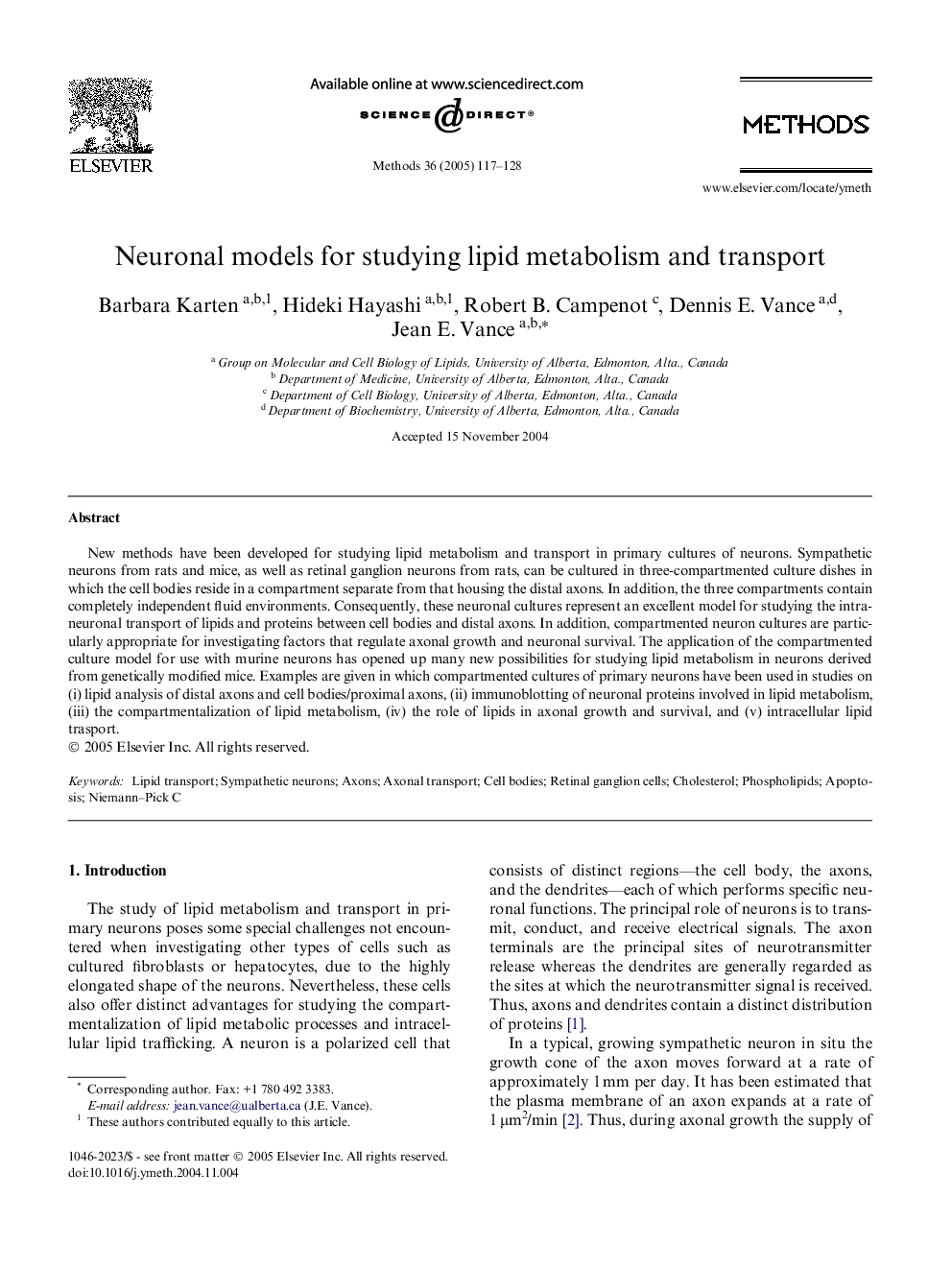| Article ID | Journal | Published Year | Pages | File Type |
|---|---|---|---|---|
| 10826722 | Methods | 2005 | 12 Pages |
Abstract
New methods have been developed for studying lipid metabolism and transport in primary cultures of neurons. Sympathetic neurons from rats and mice, as well as retinal ganglion neurons from rats, can be cultured in three-compartmented culture dishes in which the cell bodies reside in a compartment separate from that housing the distal axons. In addition, the three compartments contain completely independent fluid environments. Consequently, these neuronal cultures represent an excellent model for studying the intra-neuronal transport of lipids and proteins between cell bodies and distal axons. In addition, compartmented neuron cultures are particularly appropriate for investigating factors that regulate axonal growth and neuronal survival. The application of the compartmented culture model for use with murine neurons has opened up many new possibilities for studying lipid metabolism in neurons derived from genetically modified mice. Examples are given in which compartmented cultures of primary neurons have been used in studies on (i) lipid analysis of distal axons and cell bodies/proximal axons, (ii) immunoblotting of neuronal proteins involved in lipid metabolism, (iii) the compartmentalization of lipid metabolism, (iv) the role of lipids in axonal growth and survival, and (v) intracellular lipid transport.
Keywords
Related Topics
Life Sciences
Biochemistry, Genetics and Molecular Biology
Biochemistry
Authors
Barbara Karten, Hideki Hayashi, Robert B. Campenot, Dennis E. Vance, Jean E. Vance,
